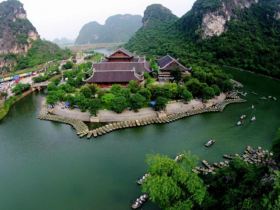To date, a large number of all kinds of wallpaper are represented on the construction market. They are made of paper, bamboo, velor, traffic jams, vinyl and many other materials. Plus everything, they differ in density, water resistance, texture. In order to make the right choice, you need to know all the existing types of wallpaper that we describe below.
Types of wallpaper on the material of manufacture
Wallpaper is made from both natural and synthetic materials. Some species combine natural components and synthetic fibers. We describe in the most detailed each view.
Paper wallpapers are the most popular due to the low cost and ease of gluing. In addition, they are environmentally friendly, the surface of the walls “breathes”. That is why these wallpaper is recommended for application on the walls in children’s, sleeping rooms, as well as in medical institutions and sanatoriums. However, they have a number of minuses – fragility and exposure to moisture. Their operational period is on average 5-8 years.
Textile wallpaper has the appearance of a paper canvas, which is covered with natural or synthetic threads on top (in some cases mixed). They provide excellent noise – and thermal insulation, have the necessary light resistance. Some types of wallpaper containing flax fibers also provide bactericidal properties. The most popular from this type of wallpaper are velor. The disadvantage can be considered the difficulty in care (sometimes you can not wipe the spots).
Vinyl wallpapers are made of two layers – paper (or fabric) and polyvinyl. Close or drawing is applied on top, in some cases a certain volumetric structure is given. Among the main advantages, water resistance, strength, elasticity are distinguished. Therefore, they can easily be used in wet rooms. Among the minuses: the complexity of styling, intolerance to moisture and temperature changes.
Non -woven wallpaper – used for further painting. This is a fairly dense and durable material that withstands up to 10 stages of staining. The advantage is the durability and the possibility of creating any coating design. To do this, just choose the desired shade of paint. If desired, wallpaper can easily be repainted in a different color.
Glass -beams are made of fiberglass, which in turn consists of quartz sand, lime, dolomite, soda. That is, they are made from environmentally friendly materials. The coating does not form an environment favorable for the formation of fungus and mold. It also has a neutral charge of electricity, because all kinds of allergens and dust do not stick to the surface of the walls. Plus, these wallpaper provide high vapor permeability, fire safety, water resistance.
Veneer wallpapers are made of two layers. The first is paper, the second is the veneer of expensive wood. There are also wooden wallpapers that have the form of planks that are alternately set to the surface. However, they differ significantly from the wallpaper based on veneer. Of the main advantages, good heat – and soundproofing characteristics, affordable cost are highlighted.
Liquid wallpaper or otherwise they are called “silk plaster”. Differ from typical rolled wallpaper by applying. First you need to prepare them (stir a dry mixture of water), and then apply a spatula. Of the main advantages, they distinguish: environmental friendliness, heat – and soundproofing, lack of seams on the walls of the walls, magnificent design, vapor permeability. Of the minuses: long -term drying, exposure to mechanical influences.
Types of wallpaper by: water resistance, density, texture
All wallpaper also subdivide by operational characteristics. So, in water resistance, they distinguish: ordinary, waterproof, washing, high -resistant (vinyl) wallpaper. The first, you can not wash with a damp rag. You can only sometimes wipe them with a brush or clean them with a vacuum cleaner. The latter are easily wiped with a damp sponge, but without the use of cleaning compositions. The third and fourth can be washed with a damp sponge using any detergents.
The density is distinguished: light and heavy wallpapers (about 100 GM2, if you independently glue. In this case, you need an assistant who will support the canvases on the other side.
Checking the material when choosing wallpaper for walls
All kinds of wallpaper types for walls on material, texture, density and water resistance were described above. At the factory, when the finished paintings are released, the material is also checked by a number of parameters. We will describe them in the most detailed so that you can pay attention to these points when buying. So, in the production they must do: testing vapor-conductivity, medium density, resistance to UV rays, moist wiping, determining resistance to washing with a wet method using detergents.
All these tests are made in order to check the declared operational characteristics. Also, during such procedures, the presence of marriage in the material is revealed. Thus, when the tests are completed, the manufacturer clearly knows what parameters to improve the product. However, sometimes, a poor -quality product still gets on store shelves. Therefore, you must properly inspect the canvases and pay attention to the declared characteristics.


